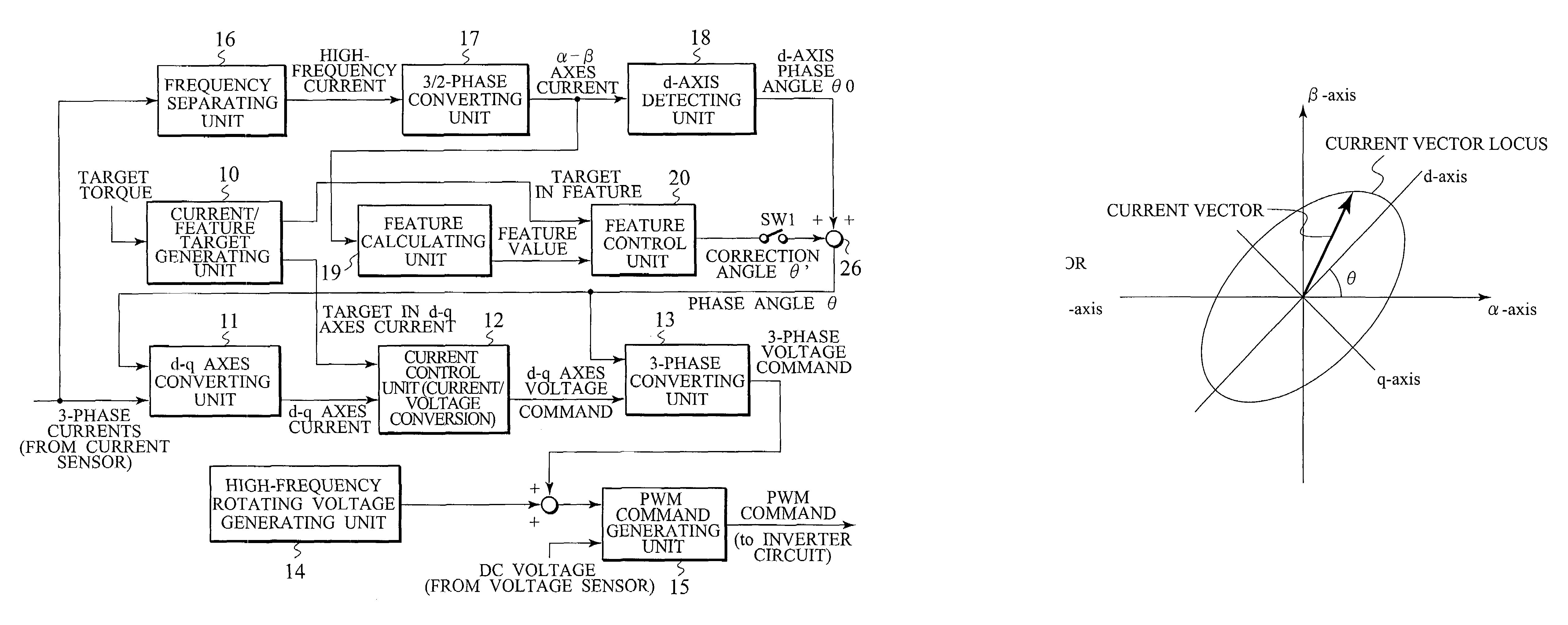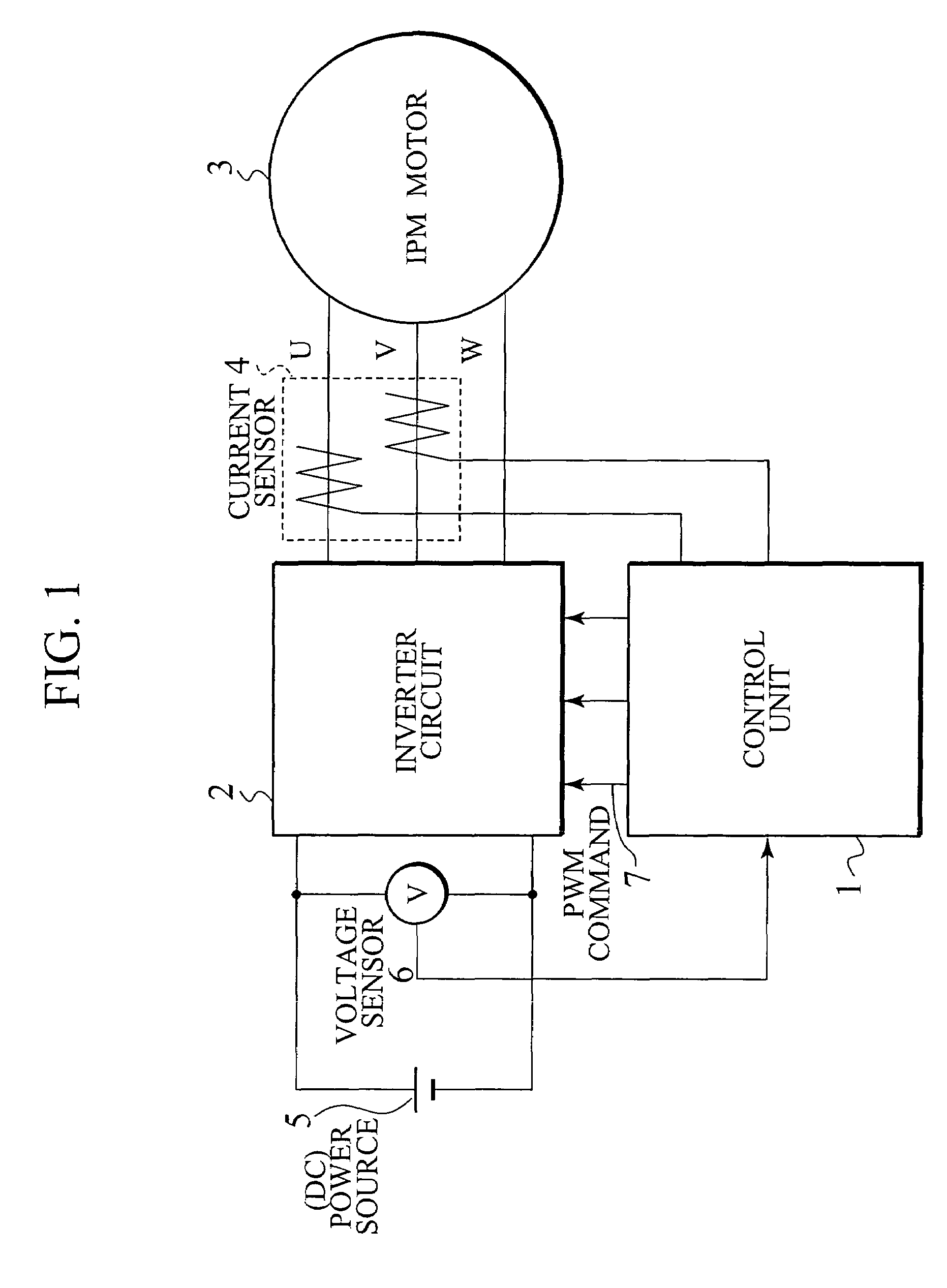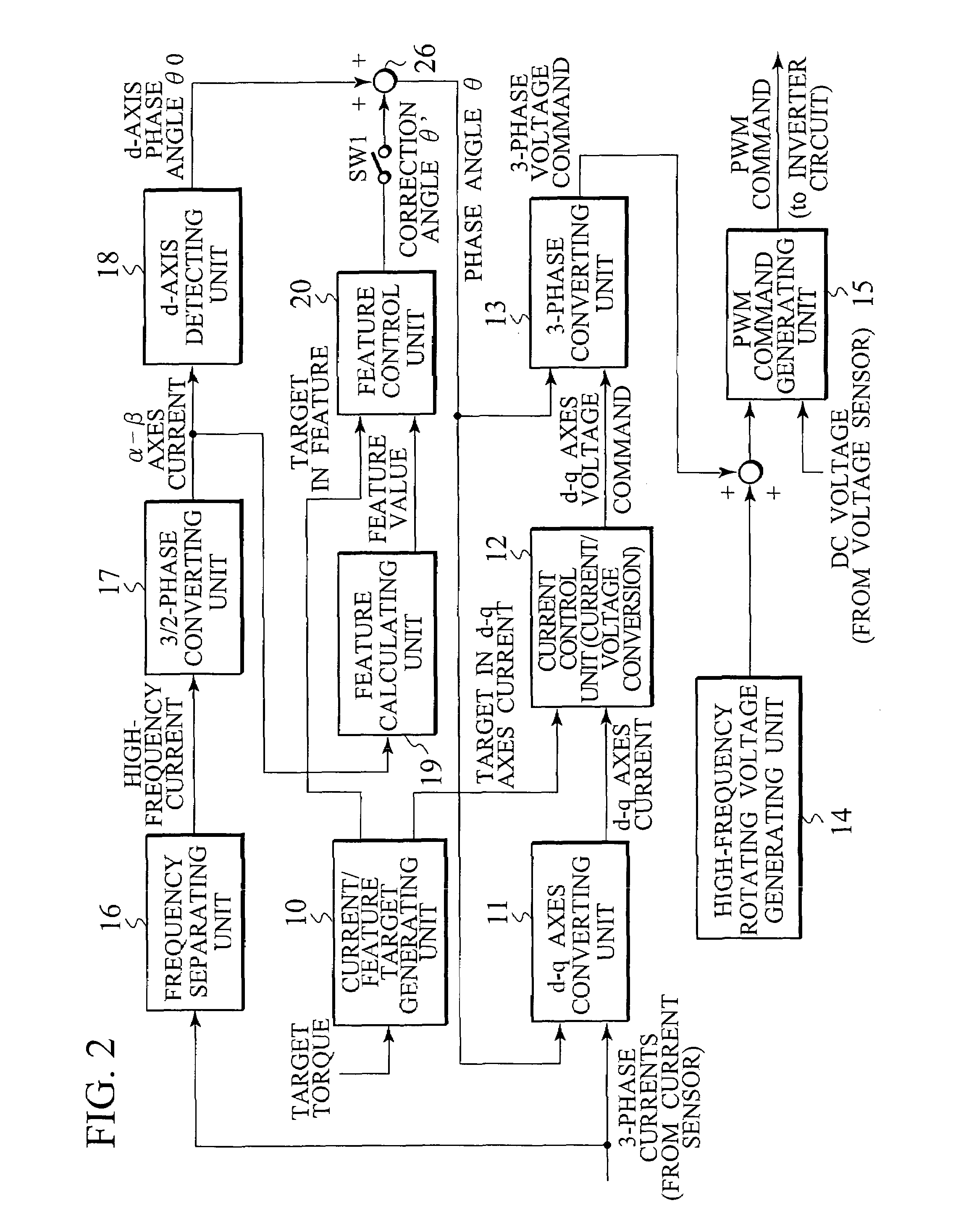Control device for electric motor
a control device and electric motor technology, applied in the direction of motor/generator/converter stopper, dynamo-electric gear control, dynamo-electric converter control, etc., can solve the problems of deteriorating control accuracy at the motor's driving under a high load condition, increasing the q-axis current further,
- Summary
- Abstract
- Description
- Claims
- Application Information
AI Technical Summary
Benefits of technology
Problems solved by technology
Method used
Image
Examples
first embodiment
[0055]FIG. 2 is a block diagram showing the details of the control device 1, in accordance with the invention.
[0056]In FIG. 2, a current / characteristic feature target generating unit 10 generates a target value in d-axis current, a target value in q-axis current and a characterizing amount based on a target torque (e.g. manipulating amount for accelerator pedal) provided from outside. Noted that “characteristic feature” is a value based on at least one of the length of a long axis and the length of a short axis of a current vector locus. As the above value, for example, there are the length (a) of a long axis, a length (b) of a short axis, a+b, a×b, √{square root over ( )}(a2+b2), a / b, √{square root over ( )}(a2+b2)÷(a+b), etc. which will be described later in detail.
[0057]A d-axis / q-axis converting unit 11 calculates a d-axis current and a q-axis current by the three-phase currents obtained by the current sensor 4 of FIG. 1 and a phase angle θ (its details described later).
[0058]A ...
second embodiment
[0133]Next, FIG. 22 is a block diagram, showing the details of the control device 1 of FIG. 1, in accordance with the invention.
[0134]In this embodiment, when the motor is driven in a high load zone causing the magnetic saturation, only the characteristic-feature control unit 20′ detects a phase of the motor, while a d-axis phase angle θ0 from the d-axis detecting unit 18 is not used.
[0135]In this case, the characteristic-feature control unit 20′ outputs an angular speed ω′[rad / s]. Then, the angular speed ω′ is integrated to calculate a phase angle θ′ [rad] by an integrating circuit 21. That is, the characteristic-feature control unit 20′ calculates an angular speed ω′[rad / s] and corrects a phase angle by means of PI control method etc. Since the characteristic quantity has a feature of downward inclination to the right due to the current phase β, if an actual characteristic feature is larger than its target value, the detection phase is advanced (increasing of the angular speed ω′)...
third embodiment
[0146]FIG. 23 is a block diagram, showing the details of the control device 1 of FIG. 1, in accordance with the invention.
[0147]In this embodiment, an angular speed ω is employed in the calculation of a d-axis phase angle θ0 at the d-axis detecting unit 18.
[0148]In FIG. 23, the frequency separating unit 16 inputs a d-axis current and a q-axis current after conversion by the d-axis / q-axis converting unit 11 and further separates high-frequency components (high-frequency d-axis / q-axis currents) from the above currents.
[0149]At the d-axis detecting unit 18′, both amplitude and phase of the current vector are determined by detecting respective peak values and zero-cross periods of the d-axis component id and the q-axis component iq of the current vector (after separating high-frequency components) converted onto the d / q-axes. Although an angle θ between the d-axis and the long axis of an ellipse is similar to that of the above expression (1) expect to alter the members of Iα, Iβ, φiα an...
PUM
 Login to View More
Login to View More Abstract
Description
Claims
Application Information
 Login to View More
Login to View More - R&D
- Intellectual Property
- Life Sciences
- Materials
- Tech Scout
- Unparalleled Data Quality
- Higher Quality Content
- 60% Fewer Hallucinations
Browse by: Latest US Patents, China's latest patents, Technical Efficacy Thesaurus, Application Domain, Technology Topic, Popular Technical Reports.
© 2025 PatSnap. All rights reserved.Legal|Privacy policy|Modern Slavery Act Transparency Statement|Sitemap|About US| Contact US: help@patsnap.com



